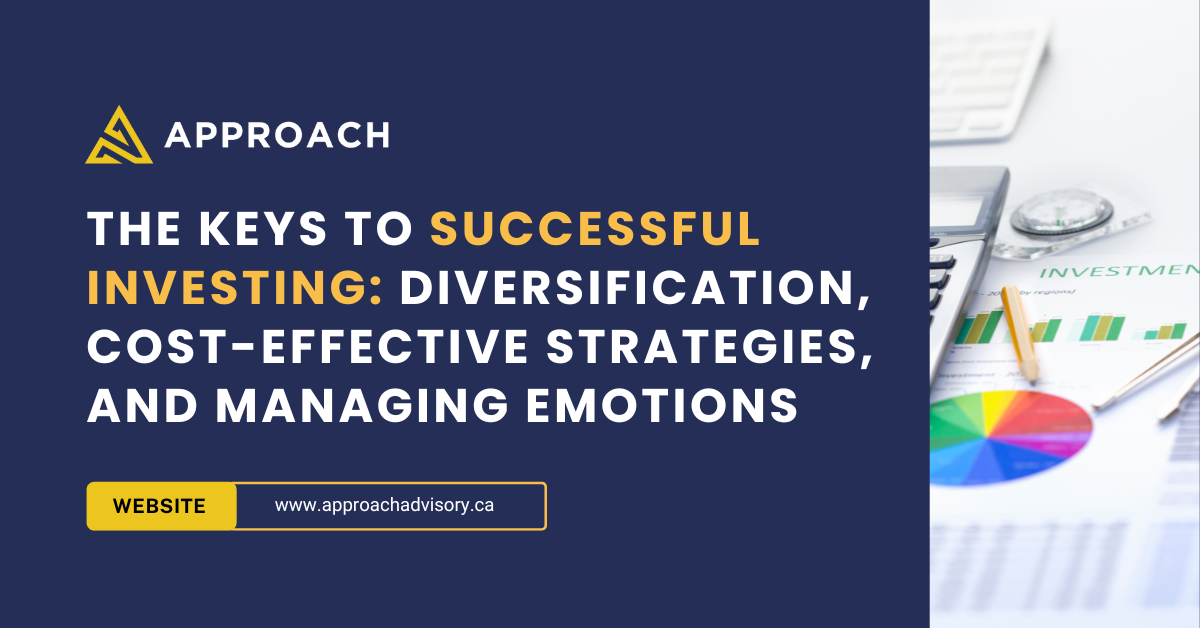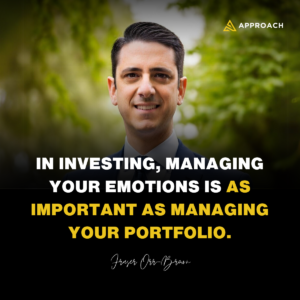The Keys to Successful Investing: Diversification, Cost-Effective Strategies, and Managing Emotions

As a wealth advisor, I know that when it comes to investing, most people aren’t interested in the day-to-day details of the market.
What clients really want is to feel confident that their financial future is secure.
Which is why a lot of people pay attention to what people like Warren Buffett have to say about investing.
For example, many people are familiar with Warren Buffett’s famous advice to invest in low-cost index funds.
But it’s not enough to blindly follow advice like this – it’s important to understand how that advice fits into a broader strategy that can help you reach your financial goals.
So let’s take a look at the bigger picture.
I believe effective investing comes from following three key principles: diversification, cost-effective strategies, and managing emotions.
1. Diversification: Spreading Risk for Long-Term Success
One of the most valuable lessons in investing is the importance of diversification.
Buffett himself advocates for a diversified approach through index funds like the S&P 500 because they give you exposure to a wide range of companies, reducing the risk of betting everything on one stock or sector.
But even with the S&P 500, there’s still more to consider.
Right now, many people are flocking to the S&P 500 because it’s historically delivered strong returns and is generally well diversified. 
However, it’s important to understand that the market is at an all-time high in terms of valuation. The S&P 500 has never been this expensive relative to the earnings you’re getting for your money.
While it’s been a great investment historically, there’s always risk—especially when valuations are stretched like they are today. This doesn’t necessarily mean that the S&P 500 won’t continue to grow, however, it does raise question marks around what an investor is paying for and are there more reasonably priced assets
Buffett’s recommendation to invest in a broad index fund is a great starting point, but diversification can go further.
Small-cap value companies, for example, have consistently outperformed larger companies over the long term. These smaller companies are often overlooked, but they have the potential to grow significantly – like how Amazon started small and became a giant.
Of course, not all small companies become the next Amazon. If you’re diversified, you’re also going to have those companies that fail or that are really small, but over time, the companies that make it big end up compensating for that.
Adding this kind of diversification to your portfolio can increase your chances of capturing higher returns over time.
2. Cost-Effective Strategies: Avoiding Unnecessary Fees
Buffett is famous for saying, “In investing, you get what you don’t pay for,” emphasizing the importance of keeping investment costs low.
This is one reason he advocates for low-cost index funds like the S&P 500. The truth is, many investors fall into the trap of paying for active management—where a fund manager picks stocks—which often results in lower returns over time due to the high fees involved.
The numbers don’t lie: When you look at all actively managed funds together, their net return is typically reduced by 1% or more due to fees. Essentially, that’s money being taken out of your pocket. Buffett advises against paying these unnecessary fees because, over time, the average actively managed fund underperforms the market.
An index fund, by contrast, is much more cost-effective. It’s low-cost, and because it’s diversified, it reduces risk while increasing returns over the long term.
However, even with low-cost index funds, it’s possible to enhance returns by considering small-cap value stocks. These companies offer a risk-reward premium that can outperform the broader market over time, especially when you’re investing with a long-term perspective.
3. Managing Emotions: The Hidden Key to Successful Investing
Here’s the biggest challenge most investors face: managing their own emotions.
Even with a well-diversified, cost-effective portfolio, it’s all too easy to react emotionally to market fluctuations.
Investors often hurt themselves by trying to time the market or chase after the latest hot stock.
There’s a great example from the history of the Fidelity Magellan Fund. It was one of the best-performing funds over a 20-year period, yet over half of the investors in that fund actually lost money.
It sounds crazy, but it’s true!
Why?
Because they bought when the fund was at its peak and sold during downturns—following their emotions instead of sticking to their strategy.
There’s even research showing that investors who forgot they had an account at a brokerage firm often performed better than those who actively managed their investments. It’s a reminder that sometimes, the best thing you can do is to sit tight and let your long-term strategy play out.
By combining a diversified portfolio that includes small-cap value companies, sticking to cost-effective strategies, and managing your behaviour during market fluctuations, you can set yourself up for long-term success.
Investing isn’t about following the latest trends or making quick decisions based on emotion.
It’s about staying disciplined, focusing on your long-term goals, and making sure your strategy is built on sound principles.
And if you ever feel uncertain or need guidance, that’s where a wealth advisor can provide the support and perspective you need to stay on track.
In a world where markets can be unpredictable and emotions can run high, having a clear strategy and sticking to it is the best way to ensure you’re not just okay today, but secure for the future.

Your first step is a free consultation call to see if we’re a good fit to work together. Click the button to set up a time I’m looking forward to meeting you!
